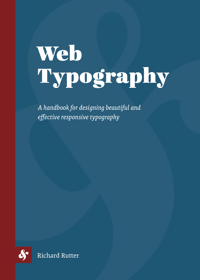2.4.1 At hyphenated line-ends, leave at least two characters behind and take at least three forward
“Fi-nally is a conventionally acceptable line-end hyphenation, but final-ly is not, because it takes too little of the word ahead to the next line.”
Unlike much word processing and page-layout software, there is not yet any automatic hyphenation built into web browsers. The next best method is to insert hyphen characters manually.
Liquid layouts and resizable text mean that, on the Web, one never knows which word will be at the end of a line. To deal with this in HTML, there are two types of hyphens: the plain hyphen and the soft hyphen. Browsers treat the plain hyphen as just another character. The soft hyphen tells the browser where a word break can occur, and should only be displayed when a word is being broken across two lines.
The soft hyphen has existed since HTML 3.2, and is explained well in the HTML 4.0 recommendation. Its entity code is ­ or ­ and is used as follows:
anti­dis­est­ab­lish­ment­arian­ismWhich renders in your browser as: antidisestablishmentarianism antidisestablishmentarianism antidisestablishmentarianism.
By definition, a soft hyphen should only appear when the word is wrapped. Browser support for this was patchy, but the situation has improved recently. Internet Explorer 6 treats the soft hyphen correctly, as do Opera, Safari 2 and Firefox 3. However older Gecko-based browsers such as Firefox 2 hide all soft hyphens and do not perform any hyphenation. By contrast Safari 1 displays all soft hyphens regardless of whether the word is wrapping.
The Future
Until recently, the CSS 3 Text module contained the hyphenate property which could be set to auto or none. This property introduced the concept of automatic hyphenation to browsers, and would require that the web browser has a hyphenation dictionary for the language of the text being hyphenated. For example:
p {
hyphenate: auto;
}At the time of writing, the latest Working Draft of March 2007, states that the definition of the hyphenation feature is still very much up-in-the-air, but it’s likely that advanced hyphenation controls will be introduced. The CSS 3 Paged Media module has more details of the hyphenation properties originally proposed, among these are the hyphenate-before and hyphenate-after properties which specify the minimum number of characters in a hyphenated word before and after the hyphenation character. For example:
p {
hyphenate-before: 2;
hyphenate-after: 3;
}
